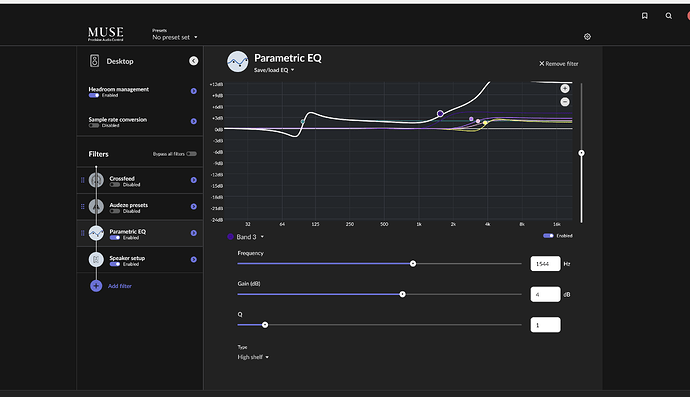I’m sure this one has been beaten around the bush many a time, but can clipping really damage my active speakers? I tend to push up those high frequencies real high on the parametric eq, and just bought these $$$ active speakers and don’t want to risk it if it’s true. Especially the prospect of tweeter damage frightens me… I really don’t listen at high volume levels if that makes any difference, but I have feeling it doesn’t. I’d prefer not to use the headroom adjustment, but will if it will prevent damage. I have it at “-1” right now, and see that red sparkling thing come up here and there while playing a track.
It depends entirely on the brand and model of speaker you have, so contact the manufacturer and ask about this.
Some active speakers incorporate limiting/soft clipping in the crossover filters/amplifiers to prevent clipping/speaker damage for instance but others do not. For ones that do not you could certainly damage the tweeters through clipping at high playback levels. At lower playback levels it should not be an issue.
Why not? You are already using DSP, so using DSP also for headroom management won’t make anything worse
Unless you actually like the sound of clipping distortion, using headroom management (or just winding the overall gain down on the EQ) will make it sound better…
Why would you want to listen to it clipped at all as it’s going to lower quality rather than improve. You need to apply headroom in the digital domain to maintain signal integrity or your loosing detail.
Thanks everyone. I actually do not hear any distortion whatsoever with the Headroom deactivated, even when it’s clipping. If it’s distorting, it does so for less than a second and is not audible to me. I really like the sound without the headroom enabled, but will enable it, and turn up the value if it will prevent damage. The speakers are the Sony SA-Z1 Near-Field. Just got a pair for nearly half off. Okay, will try to research if Sony added any protective mechanism to prevent damage occurring in this way. I live in a condo complex and never turn up the volume all that high anyway. Sounds like that does in fact make a difference then.
Funny you say that, because it always sounds like I’m LOSING detail when I enable the Headroom option.
A loss of loudness is almost always perceived as a loss of quality.
This is too vague a description to offer any meaningful advice, really, so would you mind showing us your EQ graph screen shot?
Adjust the volume back up so it’s at previous listening level. Any volume level differences will sound like that with the louder one perceived as better. Having clipped samples for the sake of volume is just crazy. Once clipped it’s gone and can’t come back digital audio can’t go higher than 0db without clipping and with adjusting eq with boosts or even reductions you run the risk of a high level of clipping especially with a lot of modern music where its compressed to hell and peaks regularly at 0db unless you reduce the headroom. It’s there for a very good reason so I would use it. This is how it’s done in the recording world you can’t boost without reducing your overall headroom.
Put on the headroom management set it to 0db and turn on clipping indicator and then watch your signal path. Some music you may get away with but many you won’t.
All of the responses here have been on point, but to address a particular detail in the OP’s post: clipping in the digital domain is profoundly unlikely to have a damaging impact on your speakers compared to clipping in the amplification domain.
It may be crazy, but that’s a technique called “brick wall limiting”. You shave off a few peaks for a bit of extra gain - and a little better SNR. It’s only bad if misused. After all, this thread is another indication that a little clipping is most likely inaudible.
Very different cases as that’s done in the mix stage for creative reasons or technical limitations and I guess you could say intentional, adding more clipping isn’t.
I turn the Headroom from -3 to -9 and to my ears the sound becomes duller, more hollow, less bright, less powerful and dynamic. Particularly the vocals. Even if I turn up the volume. This is my subjective opinion, how my ears are hearing the sound, not necessarily how other ears might.
Okay, so when I’m seeing the clipping occurring throughout a track, because I don’t have Headroom enabled, am I experiencing clipping in the digital, or amplification domain?
So you trust Roon to do PEQ correctly but not simple volume reduction. OK
Digital, Roon knows nothing about your analog amp stage
Great, so, as long as I’m not hearing distortion, sounds like I can do away with the Headroom, and put aside any concerns about damaging my tweeters(?) Nice… Here’s the requested screen shot of my PEQ.
How much hearing damage/impairment have you sustained?
AJ
Lol, quite a bit. Let’s just say I hear that highest frequency at quite the volume, 24/7. Can tell by my PEQ settings that I’m trying to compensate huh?
